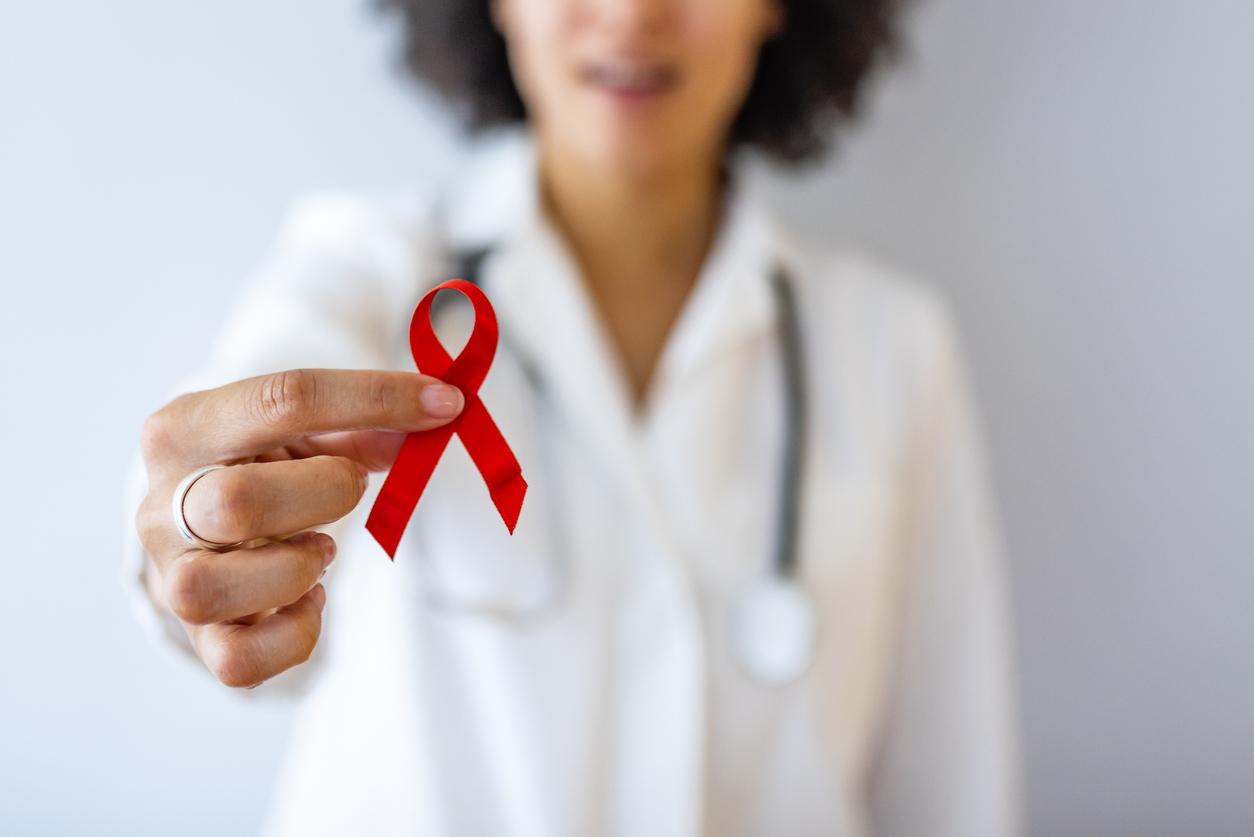The Générations Futures association reveals worrying PFAS pollution around a factory of the Solvay company, in Salindres in Gard. It could be the source of the largest TFA contamination in the world.

- A Générations Futures investigation shows significant contamination by PFAS in surface water and drinking water around the Salindres chemical platform, in Gard.
- The main substance found in drinking water is TFA, with concentrations of 19 µg/L for tap water in Boucoiran-et-Nozières and 18 µg/L for Moussac.
- There are no standards to limit the presence of PFAS in water in France, nor monitoring. A systematic search for these substances will be gradually integrated into the analyzes by 2026.
Analyzes of tap water in Moussac and Boucoiran-et-Nozières, in Gard, show contamination of drinking water by PFAS, with “extremely high exceedances” of the quality standard set by the European Union, announced the Générations Futures association in a press conference held this Tuesday, February 6, 2024. These towns are located around the chemical platform of Salindres, where a factory of the Solvay group, one of five PFAS production plants in France. “This does not mean that there is nothing outside the places of production, but these areas have particularly high levels of pollution”, specifies spokesperson François Veillerette. After extensive research in the scientific literature, the association found no trace of such high concentrations of TFA – a PFAS which serves as a “building block” for other substances, in order to improve their effectiveness, such as pesticides. fluorinated, or even certain drugs – or triflic acid – a “superacid” used as a catalyst and precursor in organic chemistry – in the environment, two of the substances produced by the factory.
“99.9% of PFAS found in drinking water are manufactured by the factory”
The association took around ten samples around the site of the Belgian chemical multinational, including three for drinking water. “Thanks to advanced techniques such as liquid chromatography coupled with tandem mass spectrometry (LC-MS/MS), the laboratory was able to precisely quantify the different PFAS present, including compounds specifically manufactured by Solvay in Salindres such as trifluoroacetic acid (TFA) and triflic acid”, details the report.
Not only are PFAS concentrations at the factory discharge level “exceptionally high” with TFA values reaching up to 7.6 mg/L, but we also find them in samples taken 2km from this discharge, with 3.9 mg/L in Avène. “This suggests widespread contamination of the site”specifies Pauline Cervan, toxicologist at Générations Futures.
Perhaps even worse, these substances were found at concentrations of 19 µg/L for the tap water of Boucoiran-et-Nozières and 18 µg/L for Moussac, the supply of which appears to be via catchments located near the bed of the Gard. “99.9% of PFAS found in drinking water are manufactured by the factory.” In Salindres, where the water comes from a collection point well upstream of the chemical platform, no substance has been detected and quantified.
PFAS in drinking water: no standard in France
The European Union proposes two standards for PFAS: the first indicating that the sum of the 20 PFAS “deemed to be of concern” must not exceed a concentration of 0.1 μg/L of drinking water; and the second setting the sum of all PFAS at 0.5 μg/L of drinking water. “France has decided not to apply these standards because we cannot yet measure all PFAS, but here we are experiencing exceedances up to 38 times higher.”, underlines the specialist who also specifies that these standards are not even health values.
TFA in drinking water: is there a health risk?
Little data exists regarding the effects of TFA on human health, and only two European countries seem to be interested in it. In Germany, a health value of 60 μg/L has been set, “based on a single chronic study carried out on animals… and carried out by Solvay”. It is not the same approach in the Netherlands: “The RIVM agency (equivalent to ANSES in France), considers that we cannot exclude effects on the immune system of TFA like other PFAS which act with much lower effects. It therefore set a maximum health value at 2.2 μg/L, i.e. a limit value well below what we found in the two municipalities.”, explains the toxicologist. “[Générations Futures] did not find any element that would reassure residents, there is no health risk excluded, so it is up to the authorities to act to reduce this presence of TFA in drinking water, because there are too many unknowns.”And for good reason, the company carries out its discharges with the authorization of the prefecture, which sets a “limit” at 20 kg of TFA/day.
A cluster of glioblastomas in Salindres
“Several cases of glioblastoma occurring in Salindres and Roussin have been reported by doctors to Public Health France”, also reports Pauline Cervan, “including several with members of the factory”. The national public health agency confirms a significantly higher number of brain cancers in these towns than in the rest of Gard or all of France and is conducting an investigation to find an explanation. “They evaluated the hypothesis of radiation, and many others, but not that of exposure to perfluorinated chemicals… We are not saying that PFAS are responsible, but Public Health France must carry out the investigation taking this into account. assumption”, she insists.
Générations Futures also asks ANSES to assess the impact of TFA and triflic acid on health and the environment, in order to “to obtain a position on the reproductive toxicity of TFA as well as a health value for drinking water”, and more generally, increased monitoring of the presence of PFAS in drinking water at the national level before 2026.
This is not the first scandal to hit the Solvay company, which has already received accusations of PFAS pollution in Italy and the United States.

















